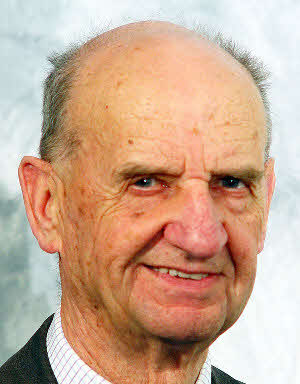Episode 319: Three Urgent Project Case Studies (Premium)
This episode is reserved for subscribers of the Premium Podcast. Learn how to subscribe to the Premium Podcast to access this interview and transcript...
This episode is sponsored by PMP Exam Simulator:

Last week, Stephen Wearne introduced us all to the basics of Managing the Urgent and Unexpected. We heard some of the lessons he learned, some best practices and what we can implement in order to prepare our organizations. So from the perspective of a project manager who is put in charge of urgent projects, we have the basics.
But there is of course more to learn by revisiting actual urgent and unexpected projects to see what those projects were like and what kind of takeaways we get from them.
And more than that -- remember that Stephen explained to us that managing an urgent and unexpected project is really the exception. So what I want to know from him at the end is this: What can we learn from all of this in relation to our regular, day-to-day projects.
Episode Transcript
Below are the first few pages of the transcript. The complete transcript is available to Premium subscribers only.
Podcast Introduction
Cornelius Fichtner: Hello and welcome to Episode number 319. This is the Project Management Podcast at www.pm-podcast.com and I’m Cornelius Fichtner. Welcome back to one of our premium episodes. And let me just say, a big thank you to all our premium subscribers like yourself who are supporting our podcast with a paid subscription. Last week, Steven Wearne introduced us all to the basics of managing the urgent and unexpected. We heard some of the lessons that he has learned, some best practices and what we can implement in order to prepare our organizations. So from the perspective of a project manager who is in charge of an urgent project, we now have the basics.
But there is of course more to learn by revisiting actual urgent and unexpected projects to see what those projects were like and what kind of takeaways we get from them. And more than that, remember, Stephen explained to us that managing an urgent and unexpected project is really the exception. So what I want to know from him as well at the end is this, what can we learn from all of this in relation to our regular day-to-day projects? And now, is that a fire over there? Enjoy the interview.
Podcast Interview
Cornelius Fichtner: Hello, Stephen, and welcome back to the podcast.
Stephen Wearne: Hello, Cornelius.
Cornelius Fichtner: So what will our listeners get out of the review of these three case studies of urgent and unexpected projects?
Stephen Wearne: I hope they might get some appreciation of the actual situation of an individual, when the phone rings, the e-mail comes, whatever, that says there is this job that now needs to be done. There’s no budget. There’s no plan. There’s no team. We don’t know the state of things. All we know is we got to start now. And it is to get something like sort of, a feeling of what it’s like to be in that situation, and therefore to think as I think, one always should in a beginning of any job, think of what questions do I ask before I presume I know what I need to go ahead and get the work started.
Cornelius Fichtner: There are a total of 12 case studies that are in your book. The book’s actually titled “Managing the Urgent and Unexpected: Twelve Case Studies and a Commentary.” How did you find and select these 12 because I suppose you found more than 12 and you’ve probably had to make a decision and say, “Okay, out of the ones we have, we’ll pick these.”
Stephen Wearne: Initially, it started from an interest in what have happened way back in London where they had to raise riverbanks because they anticipated exceptional flooding, just interest. Then later on, because of that interest, contacting people, seeing reports, meeting people to discuss what they’d learned from them, how did we select the 12? Well across the range, first of all, of types of work to be done, repairing things after emergencies, raising riverbanks to avoid emergencies, that’s a category I think that a lot of engineers and others would recognize as a type of urgent and maybe unexpected project. Looking at situation where, all right, a bridge had failed, but the actual, urgent project was to build a temporary railway station at the north-end of a bridge that had the only surviving connection or railway line to the rest of the town, says you could charter trains across it meant that the actual, urgent, unexpected project was suddenly building a temporary rail station, which is a bit more unusual. Going through others, there’s a lot more in the literature. There’s six or seven instances from Californian earthquakes, for instance. But choosing the 12 was to get across a full range of industries and a bit of a range of size. Projects that are urgent and unexpected aren’t necessarily large and commanding the attention of people to get them all the resources they need. So one of the ones included was a pretty small job. But nevertheless, in its own right, it was again a railway line to get it back to being operational was an emergency urgent project. To answer your question, apart from the obvious type of sort of, emergency projects to remedy things that have gone wrong, two or three were projects to take action to avoid things going wrong, two at least were sort of, constructive opportunities to create something which wasn’t there before. The most important and most harrowing and the largest by far was being invited to discuss lessons learned from the work on the 9/11 pile, which is obviously invited to it. I think that’s one of the strengths of having published something on other ones in PMJ and in British engineering publications. So to answer your question, they were chosen partly because of the opportunities, and then amongst the opportunities, were they a fairly representative—not representative—were they a fairly varied range of projects. And, of course, could we get sufficient, independent information to have to make sort of a decent record and deduce some lessons to be learned from them.
Cornelius Fichtner: Okay. And out of those 12 cases, you have selected three that we want to review today briefly, obviously. We can’t go into too much detail with each one of those. The first one, case study one, I think is that the one that you mentioned earlier with the bridge?
Above are the first few pages of the transcript. The complete PDF transcript is available to Premium subscribers only.

